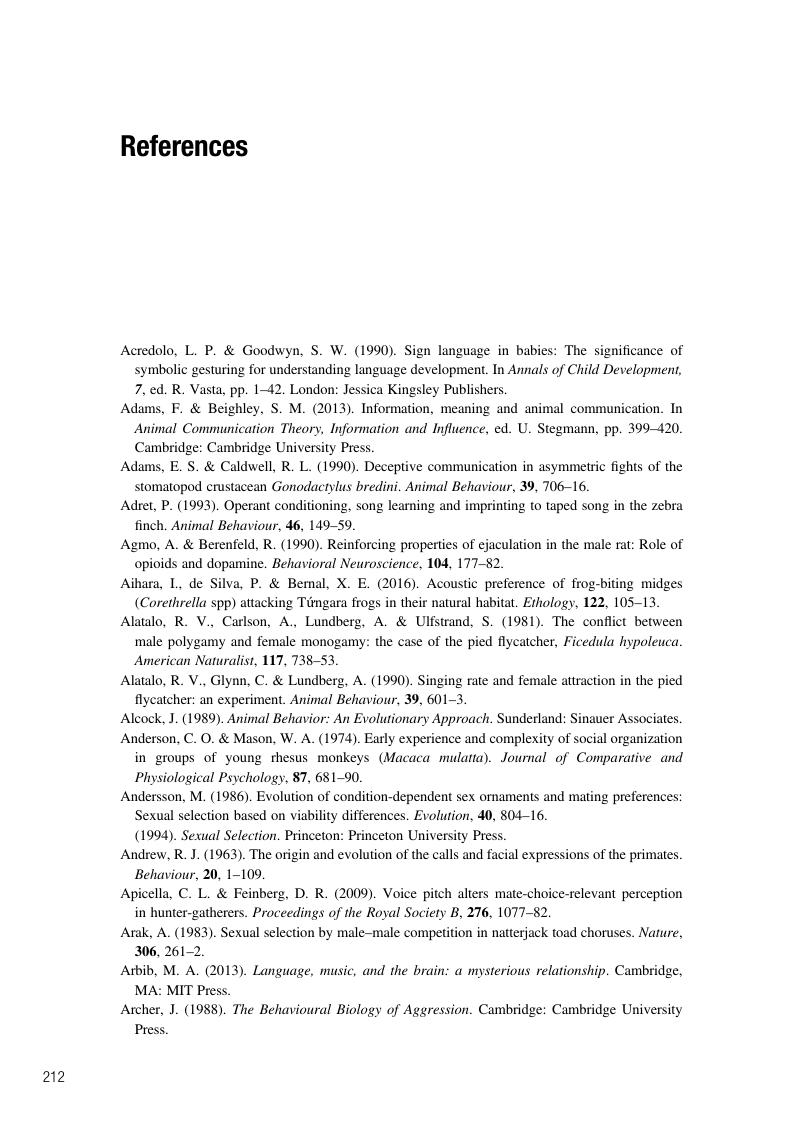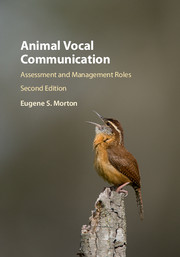Book contents
- Animal Vocal CommunicationAssessment and Management RolesSecond Edition
- Animal Vocal Communication
- Copyright page
- Dedication
- Contents
- Preface
- Acknowledgments
- Introduction
- 1 The Informationizing of Communication
- 2 The Roles of Assessment and Management in Communication
- 3 Form and Function in Vocal Communication
- 4 Mechanisms and Proximate Processes of Vocal Communication
- 5 Assessment/Management: A Viable Replacement for the Metaphor of Transmitted Information
- References
- Index
- References
References
Published online by Cambridge University Press: 13 April 2017
- Animal Vocal CommunicationAssessment and Management RolesSecond Edition
- Animal Vocal Communication
- Copyright page
- Dedication
- Contents
- Preface
- Acknowledgments
- Introduction
- 1 The Informationizing of Communication
- 2 The Roles of Assessment and Management in Communication
- 3 Form and Function in Vocal Communication
- 4 Mechanisms and Proximate Processes of Vocal Communication
- 5 Assessment/Management: A Viable Replacement for the Metaphor of Transmitted Information
- References
- Index
- References
Summary

- Type
- Chapter
- Information
- Animal Vocal CommunicationAssessment and Management Roles, pp. 212 - 245Publisher: Cambridge University PressPrint publication year: 2017



